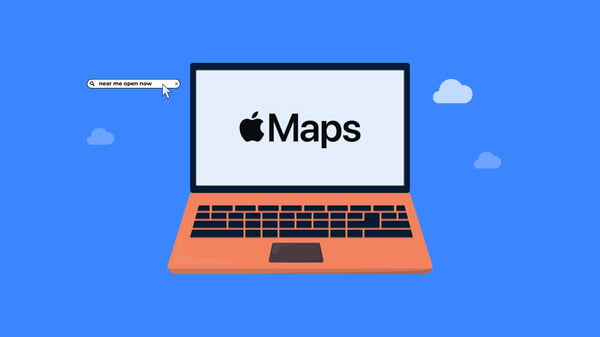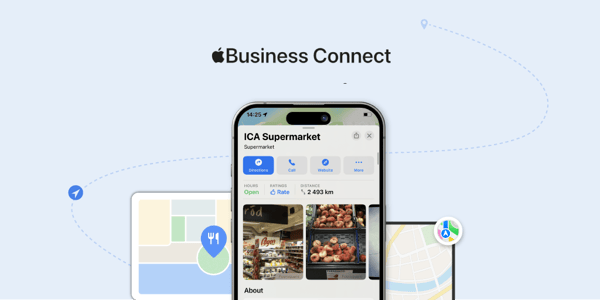Apple Maps, as the name suggests, is the map service provided by Apple and is the default map on all IOS devices. It enables users to receive turn-by-turn directions and can be used for local search, for example, you can type in “pizza” and receive info about pizza places nearby. Let’s get you through the app.
Why It Is Important
It’s estimated that three out of four IOS users use Apple Maps on their IOS devices, and Apple claims in early 2019 that there are around 900 million active iPhones and 500 million other devices including Macs, iPads, Apple Watches etc.
Even though Google Maps is the most popular search engine, in 2023 Apple users are 3 times more likely to use Apple Maps. It was previously heavily reliant on third party data like Yelp or TripAdvisor for location reviews. Since January 2023, Apple Business Connect allows businesses to interact and communicate directly with customers through the Apple Maps app - it’s like Apple’s Google Business Profile (GBP).
Navigation & Directions
Apple Maps is used on IOS devices for turn-to-turn navigation. The user has the possibility to type the name of the business they want to visit and when doing so, Apple Maps will check the data available for that location and direct the customer to the address. Unlike many others, Apple does not use any third-party data, they use their own. For your company this creates a potential risk, if your business information is not correct, especially address and coordinates, your customer will struggle to find your business. Worst case scenario, they will not get there at all.
Local search
Local search is another function of Apple Maps, which means that when customers search for terms on Apple Maps, they will obtain information about companies in their neighbourhood that fall into that category. For example, if you are a pizza baker and a consumer types "Pizza" into Apple Maps and your business is properly set up, your business will appear on the map with information such as addresses, opening hours, and a phone number. As a result, if your company relies on physical locations, it's critical that your information on Apple Maps is optimised for local search. It's worth noting that the data utilised for local searches comes from Apple, not Google. So being correctly set up on Google My Business isn't enough if you want to be correctly featured on Apple Maps!
DuckDuckGo
DuckDuckGo, a fast-growing search engine with a special focus on user privacy, has been working with Apple since early this year and bases all of its mapping services on Apple location data. DuckDuckGo believes that they have 25 million monthly users, which means that if your information on Apple Maps is wrong, you risk losing not only the 23.3 million IOS users, but also the 25 million potential consumers who use DuckDuckGo.
First-Hand Data
Apple Maps previously relied on third-party data from geo data brokers such as TomTom, OpenStreetMap, and others. This proved troublesome, and Apple has subsequently begun to generate Apple maps using data acquired directly from iPhones and Apple's own mapping cars. The new, first-hand maps were released with IOS 12 in San Francisco and the Bay Area and will be gradually made available throughout the rest of the world. Reviews are gathered from several sources, such as Yelp, Foursquare, and others. Apple's choice to create their own map has ramifications for your business; it means that the only way to ensure you have accurate business information is to set up all of your locations directly in Apple Maps.
How It Works
After persuading you of the significance of having accurate company information on Apple Maps, one question remains: How can I do it?
While the solution is straightforward, the process is somewhat messy. Apple has enabled businesses to create a business account where they can manage all of their locations, similar to Google My Business (now Google Business Profile). However, if you have a multi-location corporation with fewer than 10,000 locations, there is a huge issue: Apple will not allow bulk uploads, so you must handle each location individually, and you cannot manage your locations from multiple accounts. That may work for one or two locations, but the hassle becomes overwhelming when you have to manage, say, 100 locations. That is why we are here to assist you.


